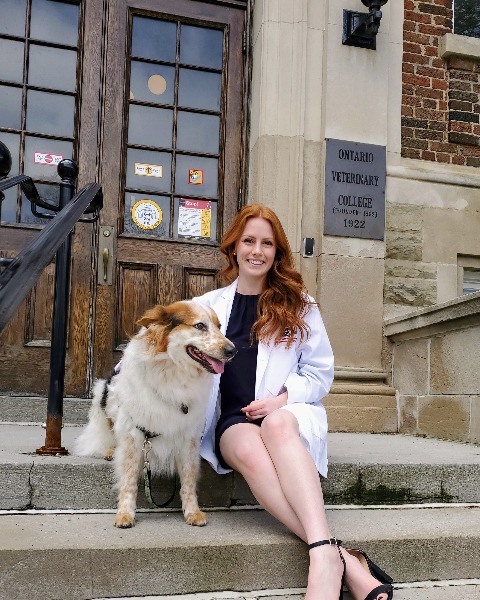Back
Small Animal
Scientific Abstracts
abs: Long-term Outcome in CAA Excision Small Animal Scientific Abstracts
Saturday, October 15, 2022
2:45pm – 3:00pm
Location: Oregon Ballroom 201

Samantha L. Dobson
University of Guelph, Ontario Veterinary College
Listowel, Ontario, Canada
Abstract Presenter(s)
Canine acanthomatous ameloblastomas (CAA) are benign tumors that can cause significant destruction to underlying bone. Surgical excision with wide margins is the current recommended treatment, however the minimum margin to prevent local recurrence is unknown. The objective of this study was to report local recurrence rates of CAA following curative-intent surgical excision with a minimum follow-up time of 6 months. A secondary outcome was to compare the planned surgical margin to histopathological margins. Fifteen dogs diagnosed with a CAA that underwent surgical excision were included. Median follow-up time was 761 days (242-1909 days). Median age and patient weight was 9.37 years (4.61-12.19 years) and 22.1 kg (5.7-48.7 kg), respectively. Tumors presented primarily in the rostral mandible (60%) with a mean maximum dimension of 2.13 cm (0.2-4 cm). All dogs underwent curative-intent surgery with maximum 2 cm margins. Complications occurred in 7 patients. When evaluating the narrowest bone margin, the mean was 11.7 mm (0-20 mm). Local recurrence was reported in 1 dog, 981 days following surgery. This dog had 1 cm planned surgical margins and clean histologic bone margins of at least 10 mm. Based on these findings, local recurrence following curative-intent surgery for CAA is uncommon and may not correlate with histopathologically clean margins. A definitive cut-off is not possible with this small sample size, but it is likely that 2 cm surgical margins are sufficient to avoid local recurrence without major post-surgical complications. This study is limited by its retrospective nature, small sample size, and varied follow-up.
